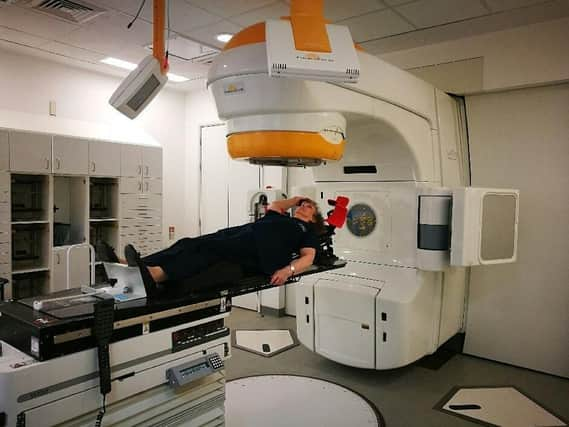A look inside the centre treating the borough's cancer patients


The patient’s life changes in those few words, as they face the battle with the disease and everything that brings.
Other news: Armed thug is jailed for robberyEach year around 400 patients from the Wigan borough are treated at a centre run by The Christie based at Salford Royal Hospital.
Advertisement
Hide AdAdvertisement
Hide AdOpened eight years ago, it provides radiotherapy treatment for patients, most of whom have been diagnosed with cancer.
It used to be that they would have to travel to The Christie’s centre in Withington, but now radiotherapy can be given in Salford for patients from Wigan, Bolton and Salford.
Gemma Dinn, who works as a Macmillan review radiographer, said: “We are still part of The Christie, but the idea of the satellite is to make us more accessible to the trust in Salford but also it’s more accessible to patients, so there’s less travelling involved.”
Lengthy journeys can take a real toll on patients who are already unwell, especially for those who need to attend every day for radiotherapy.
Advertisement
Hide AdAdvertisement
Hide AdSo the reduced distance makes a real difference to those going for treatment.
Nikki Martin, deputy manager and Macmillan review radiographer, said: “It has a massive impact on patients’ lives. If they are young and still working or have families, the reduced travelling times makes a massive difference.
“With that is reduced costs, reduced time away from work and reduced time away from the family.”
After being diagnosed with cancer, patients can be referred to the centre if they need radiotherapy.
Advertisement
Hide AdAdvertisement
Hide AdIt is one treatment available for cancer and can be used alongside or instead of chemotherapy and surgery.
It can be used to cure the cancer, reduce the chances of the cancer returning or shrink the tumour, for example so that surgery is easier to perform or to slow its progress.
Various types of cancers can be treated, with the most common including breast, prostate, lung and pancreas.
Radiotherapy involves a beam of X-rays being delivered to a precise area.
Advertisement
Hide AdAdvertisement
Hide AdThe radiation damages cells, but cancer cells are less able to repair the damage than normal cells, so they are destroyed.
Mrs Dinn said: “Radiotherapy is using strong X-rays. We target at a certain area, so we don’t treat the whole of the body it’s just certain areas.”
The patient meets a multi-disciplinary team of healthcare workers and their treatment is planned.
Mrs Dinn said: “Most patients would choose radiotherapy over surgery potentially because they can still work and have a day-to-day life. Sometimes chemotherapy isn’t an option.”
Advertisement
Hide Ad